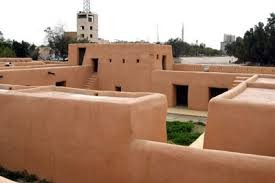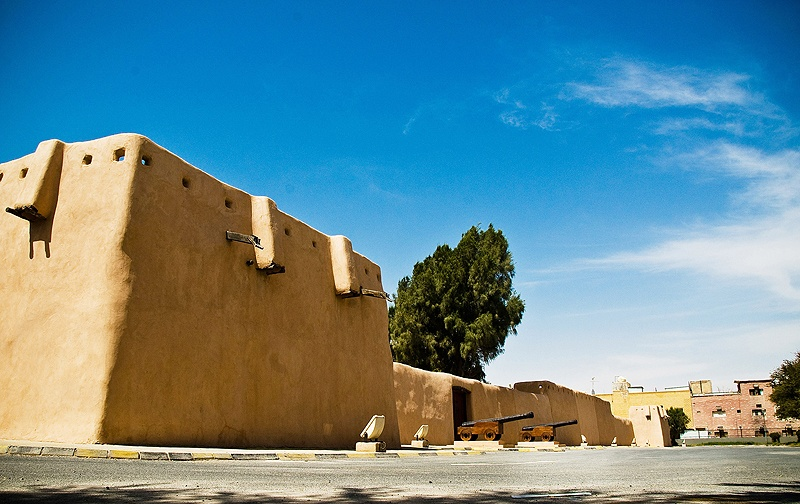Kuwait Red Fort, also known as Qasr Al‑Ahmar, is a remarkable historical landmark in the Al-Jahra area of Kuwait. This reddish-coloured fortress carries a rich legacy that blends battle history, Kuwaiti resilience, and traditional architecture. Although not as globally popular as some Middle Eastern monuments, the Kuwait Red Fort remains one of the most significant symbols of Kuwaiti heritage. This article uncovers 7 amazing facts about Kuwait Red Fort and why it should be on your 2025 travel list.
History of Kuwait Red Fort
The Kuwait Red Fort was built in the early 20th century under the reign of Sheikh Mubarak Al-Sabah, around 1914. The fortress played a major defensive role during conflicts, particularly in battles against invading tribes. Constructed mainly from mud bricks and local materials, its reddish color inspired the name “Red Fort.”
The fort was specifically designed for military use. It became a centre for Kuwaiti warriors defending the area from tribal raids during the Battle of Jahra in 1920. This famous battle was one of the most critical events in Kuwaiti history and was fought around this very location.

Architecture and Structure
The structure of the Kuwait Red Fort reflects simple yet effective Kuwaiti military design. The fort features high towers at all four corners for observation and defense. Inside, there are storage areas, prayer rooms, and resting spaces for soldiers. The red clay used in construction gives the fort a distinct color, making it visually different from other structures in the region.
Despite being over a century old, the fort is well-preserved and managed under Kuwait’s National Council for Culture, Arts, and Letters. The restoration efforts over the years have maintained the original architectural style, allowing visitors to see the fort as it looked in its prime.
Cultural Significance in Kuwait
The Kuwait Red Fort is more than a military structure. It’s a symbol of national pride and resistance. Every year, schools and institutions organize field trips to educate younger generations about the fort’s role in preserving Kuwait’s sovereignty.
In modern times, the fort serves as a reminder of how Kuwait defended its identity and land in challenging times. During national celebrations, the fort is often illuminated and becomes a site for cultural performances and exhibitions.
Tourist Experience: What to Expect
Visiting the Kuwait Red Fort is a peaceful and educational experience. The site is usually quiet, making it perfect for tourists looking for cultural exploration without large crowds. Upon entering the fort, visitors can walk through narrow passageways, climb observation towers, and enjoy scenic desert surroundings.
There are informational plaques and guides available on site. While the fort doesn’t offer food stalls or commercial stores, the nearby town of Al-Jahra has many restaurants and facilities for travelers.
Travel Tips:
- Best time to visit: October to March (cooler weather)
- Entry: Usually free, but some events may charge a small fee
- Photography: Allowed, but drones are restricted
- Closest city: Al-Jahra (about 32 km from Kuwait City)
Restoration and Preservation Efforts
Kuwait’s cultural authorities have invested in maintaining the Kuwait Red Fort to keep its heritage alive. Restoration work has focused on using original construction techniques to ensure authenticity.
Efforts include:
- Replacing damaged clay bricks with locally sourced material
- Preserving internal wooden structures
- Enhancing visitor safety without altering historic designs
Preservation teams also document oral histories and stories connected to the fort. These stories are often shared during national holidays and historical exhibitions.

Battle of Jahra: A Turning Point in Kuwaiti History
The Battle of Jahra is the most significant event associated with the Kuwait Red Fort. In 1920, over 2,000 warriors from the Ikhwan movement attacked the fort, hoping to seize control of the Jahra area. Despite being outnumbered, Kuwaiti fighters held their ground for two days until reinforcements arrived.
This battle is not only remembered for its bravery but also for the strategic importance of the fort. The fort’s location and design played a key role in the defence effort. The victory strengthened Kuwaiti unity and helped define national borders at a critical time.
How to Reach Kuwait Red Fort
Reaching Kuwait Red Fort is easy for both residents and tourists. It’s located about 40 minutes away from Kuwait City and is accessible by car or taxi.
Directions from Kuwait City:
- Drive on Route 80 toward Al-Jahra
- Exit onto King Fahad Road (Route 70)
- Follow signs to Qasr Al-Ahmar
There is free parking available near the site, and local taxis often know the location as “Red Fort” or “Qasr Al-Ahmar.” Visitors are encouraged to carry water, especially during summer, as the area can get quite hot and dry.
Is Kuwait Red Fort Worth Visiting?
Absolutely. Whether you’re a history buff, a student, or a traveller exploring offbeat destinations, the Kuwait Red Fort offers a rewarding experience. Its combination of military history, preserved architecture, and cultural value makes it a top spot in Jahra.
Unlike heavily commercialised heritage sites, the Red Fort retains an authentic charm. You can walk through history and imagine the scenes that once unfolded within its walls. It’s also a great educational destination for young people to understand Kuwait’s early struggles and victories.
7 Amazing Facts About Kuwait Red Fort
- Built in 1914 during the reign of Sheikh Mubarak Al-Sabah.
- Named for its red clay walls, giving it a unique appearance.
- Played a key role in the Battle of Jahra in 1920.
- Designed for military defence, with observation towers and inner courtyards.
- Remains one of the few mud-brick forts still standing in Kuwait.
- Serves as a national heritage site, attracting students and scholars.
- Managed by Kuwait’s cultural council, ensuring preservation for future generations.
Final Thoughts
The Kuwait Red Fort is a timeless symbol of the nation’s strength and cultural depth. In a country known for oil wealth and modern architecture, this historic site stands as a testament to a different era one where courage and strategy were the tools of survival.
As travel in the Gulf becomes more popular for cultural tourism, don’t miss your chance to explore the story behind Qasr Al-Ahmar. It’s not just a fortress. It’s a chapter in Kuwait’s identity that still echoes in the desert wind.
Do follow Gulf Magazine on Instagram
Also Read – Firefighters Control Massive Jahra Warehouse Fire on July 18



